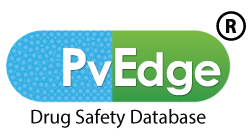- May 25, 2020
- by Team PvEdge
- PV Automation
Pharmacovigilance (PV) is defined as the science and activities relating to the detection, assessment, understanding and prevention of adverse effects or any other drug-related problem. There are many significant approaches were considered while developing the overall process of pharmacovigilance i.e. how these activities like detection, assessment, understanding, and prevention will be carried out in actual PV operations.
The significant approach towards pharmacovigilance planning was initially developed by EMA via proposing the GVP module-VI (i.e. Guideline on good pharmacovigilance practices (GVP) Module VI – Collection, management and submission of reports of suspected adverse reactions to medicinal products) in which EMA had put fourth step by step guidelines of defining & managing the activities of pharmacovigilance and also US-FDA had prescribed the guidelines for pharmacovigilance planning (PVP) for establishing an efficient PV operations.
Although efficient guidelines are at place but there are many hurdles usually occurs along with immense amount of manual efforts in all day to day PV operations. Hence, there is an emergent need of automation to be implemented in certain PV processes which will reduce the manual efforts and will result in maximum productivity and efficiency of operations team. In this blog we will discuss about the pain areas in PV operations and how we can automate them.
Types of PV operations, challenges & their automation aspects:
- PV mail-box handling
- Structured and Unstructured case intake:
- Case allocation or reallocation:
- ICSR data entry & Narrative writing
- Quality review process:
- Event assessment:
- ICSR submissions and acknowledgement receipt
- Front end masters for clients, projects, products, formulation, scopes, role assignment, agency, causality assessment, reporter, sender & receiver masters
- Efficient auto-scheduling module for automatic report generation for ICSR submission
- Efficient auto narrative generation from the fields filled in the database
- Literature automation module for medical literature monitoring (MLM)
- PvEdge®-Integrated user quality monitoring module (Daily, weekly, monthly & yearly analysis from database itself on one click)
- Integrated case allocation module for daily case assignments for each workflow
- Integrated alert management module: For sending an important alert to specific users regarding priority case
- Integrated follow up management
- Front end importing facility of XMLs to PvEdge®for Case creation (no need to have drop-box)
- Integrated notice management tool for latest client updates on notice board
- Front end case copy option for quick creation of a copy case
- Accurate audit trail compliance reports (for various masters, users, listings, import log, project specific audit trail)
- Front end facility of MedDRA upload and assignment to client (to avoid time consuming downtimes)
- Front end master for clinical study set up for CT cases (Protocol configuration wizard)
- Integrated user productivity monitoring via workflow efficiency module (Daily, weekly, monthly & yearly analysis from database itself on one click)



